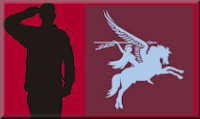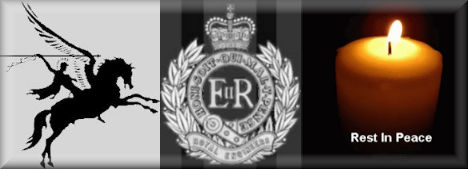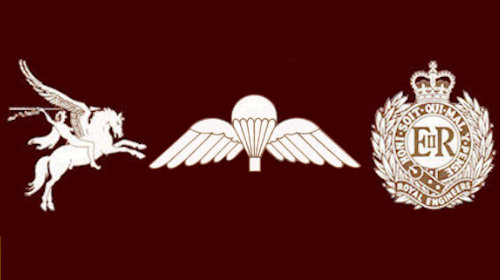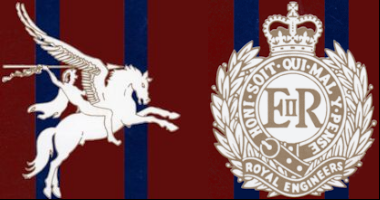
Roll of Honour

A Tribute to Maj Syd Rooth MBE by Ingram Murray
In Issue No. 20 (Dec 2006) of "The Airborne Engineer" it reported the death of Syd Rooth, once OC 9 Para Squadron, in June 2006. I am certain that I am not the only reader of our journal who remembers Syd with affection and gratitude. He was a powerful influence on me during my formative years and we were friends for life.
When, as a newly-minted 18-year old Second Lieutenant, I arrived at CBS Camp just outside Nicosia in March 1956 to join 3 Field Squadron, Syd assumed the task of licking me into shape — making sure I knew my place as the only National Service Officer in the Squadron, that I was correctly dressed and that I quickly adopted the custom and practice of a unit that had originally won its spurs in the desert and had recently moved from the Canal Zone. As a detached squadron of 22 Engineer Regiment, the Engineer Regiment of 10 Armoured Division in Tripoli, 3 Field Squadron was all but independent. With his weather-beaten face and whiskers, his suede boots and natty cords Syd looked older than his 26 years and I was in considerable awe of him.
The EOKA emergency was getting going and the pace of operations was hotting up. We provided Sapper support for all and sundry and occasionally worked as infantry in the patrolling, cordon and search and sweeps in the city of Nicosia and the Troodos Mountains. As the junior officer, I tended to get sent off to do the odd jobs, particularly at weekends, some of which turned out to be quite hairy but even though as OC 1 Troop Syd was not directly responsible for me, he was a constant source of support and advice to mitigate my inexperience.
It was perhaps before the Suez Operation that Syd gave me his best bit of advice. Presumably, because I was deemed to know Egypt — my father had been a diplomat in the Embassy in Cairo and I had joined up from Egypt —when Operation Musketeer was launched, I was sent off to Famagusta with a packet of key vehicles with orders to get myself onto a landing craft.
Famagusta was like a scene from Hell — vehicles of all shapes and sizes, British and French were crammed into the port, and the staff in charge of loading were descending into madness as they found that not only had everyone adopted a liberal interpretation of their vehicle scales but that the dimensions of some vehicles had increased, rendering the loading tables which had been based on WW II shapes and sizes, useless.
As a unit we had never done a beach landing before and we had not trained at all for one — our preparation for the operation had been confined to the construction of a Class 60 floating Bailey, which we had had to build out to sea in great secrecy as there are no rivers in Cyprus (it sank in a storm!).
But Syd had done some training on a beach somewhere and it was with his advice ringing in my ears that I insisted against all corners that my Commer Tipper with its powerful winch be stationed against the ramp of the LST so as to be first out.
And so it was, with the LST absolutely crammed full with a Battery of 25 pounders of 33rd Parachute Light Regiment, HQ and A Company 1 Para, stacks of 25 pounder ammunition and several administrative bits and pieces, and my packet — the Tipper, the OC's FFR Landrover, a D2 `dozer on its low loader, an armoured half-track and a couple of 3 tonners with tools and rations - we sailed, not knowing until sealed orders were opened en route where we were destined. And although we were assured that we would be disembarking over a quay, Nasser had blocked the canal with sunken ships so that when the ramp went down in the Fishing Harbour we were confronted by a pile of shingle. The Tipper winched itself through and then to the chagrin of the Royal Regiment hauled the 25 pounders and their grossly overloaded 1 Ton Combat Trucks through the soft going. The driver of the Tipper stuck to it although the Commer was loaded with 3 tons of PE and if anything had hit him in the general racket as the Marines and 6th. Tanks came ashore a few yards away over the beach, unloading could have been terminated with a bang.
On landing, 3 Field Squadron were ordered to support the Commando Brigade, who at that stage had no Sapper Squadron. We had never met them — they had come from Malta to Port Said but again it was Syd who knew the G3 RE in the Commando Brigade, sought him out and got us onto the right track.
The Commandos went home, 3 Div arrived and we helped build the Class 60 Bailey, which had been fished up from the sea bed by someone — but all that is another story.
It was with a real sense of loss that I left 3 Squadron in 1957 to go to university but in order to do my reserve commitment I joined 131 Parachute Engineer Regiment almost immediately. And when we did our extended Annual Camp in Aden in the mid-60's to my delight there was Syd again, helping us get ourselves sorted out in the camp on the Dhala Road.
Then when later I took over 131 Para Squadron TA, I encountered Syd in Engineer Intelligence 1 BR Corps and then as OC 9 Para Squadron, where he was obviously more at home, and contact was frequent and friendly.
Retirement eventually overtook us both but we continued to meet at the Officers' dinner; then he had to overcome illness which meant his appearances became less frequent.
Syd was the son of a WO1 in the Cavalry and grew up in India. He was immaculately turned out, punctilious, self-disciplined and always courteous and helpful. For me, he was true-blue right through.
One thing I quite forgot was that he was awarded the MBE for rescue works in the Skopje earthquake.












